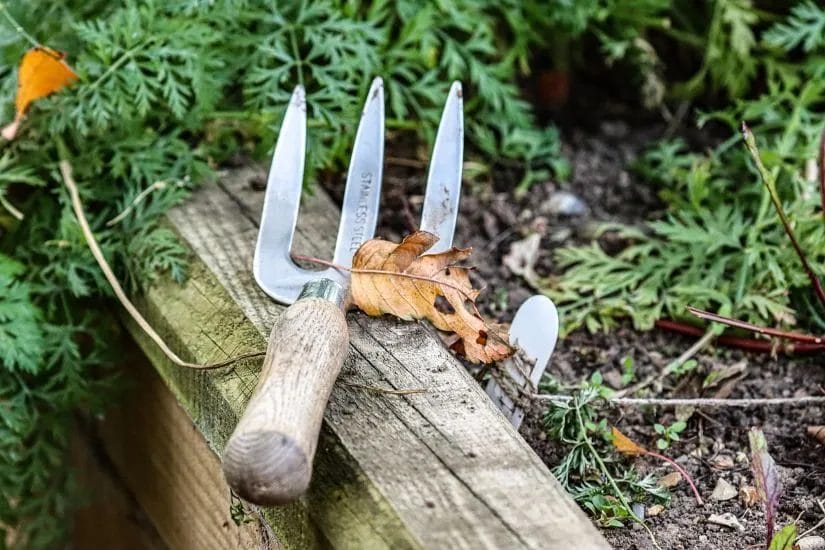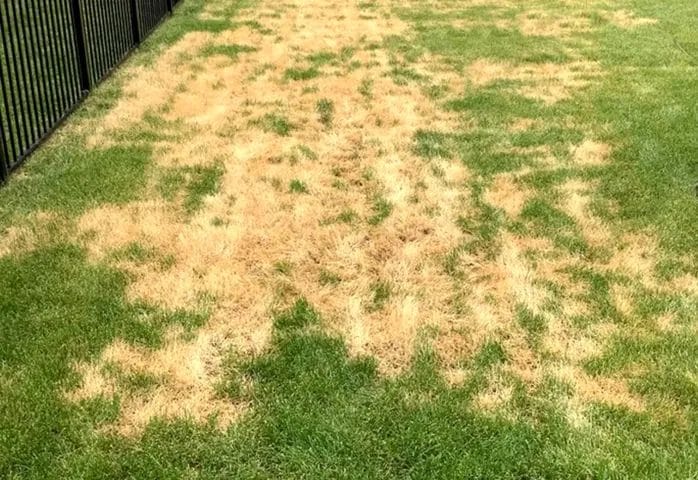
You’re about to tackle a crucial task: cutting a vertical tree branch. As a homeowner, you know it’s necessary to prune your trees to maintain their health and safety. But you’re not a professional arborist, and the thought of cutting a vertical branch can be daunting. Don’t worry, Smith Brothers Landscape is here to guide you through the process. With our expertise in tree services, including Smith Brothers tree services, Smith Brothers landscaping, and Smith Brothers services, we’ll walk you through the steps to safely cut a vertical tree branch. So, grab your pruning tools, and let’s get started!
Before You Get Started
The task of cutting a vertical tree branch can be daunting, but with the right approach, you’ll be able to tackle it safely and effectively. Before you begin, it’s crucial to identify the reasons why you need to cut down the branch and take necessary safety precautions to avoid accidents.
Identifying Reasons to Cut Down Tree Branches
Risks associated with overgrown or damaged branches are numerous, and it’s crucial to recognize the signs that indicate the need for pruning. Cracked or sagging branches, decaying or dead wood, branches growing towards another person’s property, infested branches, damage caused by strong storms, and shaping the tree are all valid reasons to cut down a vertical tree branch. For more information on how to cut vertical branches at height.
By understanding the reasons behind pruning, you’ll be able to make informed decisions about which branches to cut and when to do so. This knowledge will also help you prioritize your pruning tasks and ensure the health and safety of your tree.
Safety Precautions and Considerations
Precautions are paramount when it comes to tree work, as the risks of injury or damage are ever-present. From slippery conditions to hidden power cables and dealing with heights, it’s crucial to take necessary safety measures to protect yourself and your property.
Understanding the importance of safety precautions will help you prepare for the task ahead and minimize the risks associated with cutting a vertical tree branch. By taking the time to assess the situation, plan your approach, and gather the necessary equipment, you’ll be able to complete the task safely and efficiently.
At Smith Brothers Landscape, we offer expert tree services, including pruning and removal, to help you maintain the health and beauty of your trees. Our team of professionals has the knowledge and experience to tackle even the most challenging tree care tasks, ensuring your property remains safe and well-maintained. Contact us today to learn more about our Smith Brothers services, including Smith Brothers landscaping, Smith Brothers tree services, and Smith landscaping.
When to Cut Down Tree Branches
Little do people know, timing is everything when it comes to cutting down tree branches. Although tree branches should be cut whenever necessary, pruning tree branches during certain periods will ensure a faster growth and healing time.
Pruning During Dormant Periods
To minimize the risk of infestations and open-cut wounds, try to prune while the tree is still dormant. This will give your tree a head start on the healing process, reducing the risk of disease and pests. The best time to do this would be sometime during winter, as the tree is less active and more receptive to pruning.
In Illinois, winter is the ideal time to trim trees, as the cold weather slows down the growth of the tree, making it easier to prune. By pruning during this period, you’ll be giving your tree the best chance to heal quickly and grow stronger.
Avoiding Rainy or Humid Days
Branches that are cut during rainy or humid days are more susceptible to disease and decay. This is because the moisture creates an ideal environment for fungi and bacteria to grow, leading to infection and further damage to the tree.
It’s crucial to wait for a dry spell before cutting down tree branches, as this will reduce the risk of infection and promote healthy healing. By doing so, you’ll be ensuring the longevity and health of your tree, and avoiding costly repairs down the line.
It’s also important to note that Smith Brothers Landscape offers professional tree services, including pruning and trimming, to help you maintain the health and beauty of your trees. With their expertise, you can rest assured that your trees are in good hands. Contact them today to learn more about their Smith Brothers services and how they can help you with your tree care needs.
Things to Look Out for When Cutting a Vertical Tree Branch

There’s more to cutting a vertical tree branch than just grabbing a saw and starting to cut. You need to consider several factors to ensure a safe and successful pruning process.
Cutting Angle
An important aspect to consider when cutting a vertical tree branch is the cutting angle. The angle at which you cut the branch will determine how and where it will fall, which is crucial for safety reasons. Additionally, the cutting angle will also affect the healing process of the tree, as a clean cut will help the tree form a callus tissue (scar tissue) more efficiently.
A good cutting angle will also help prevent water from accumulating on the cut surface, which can lead to rot and decay. It’s important to make a clean, angled cut, sloping away from the tree trunk, to promote healthy healing and minimize the risk of disease.
Size of Branch
The size of the tree branch is another critical factor to consider when pruning. The size will dictate the type of tools you’ll need to use, as well as the technique required to make a clean cut. Thicker branches will require more powerful tools, such as chainsaws, while smaller branches can be handled with hand pruners or loppers.
The size of the branch will also affect the weight and momentum of the falling branch, which is important to consider for safety reasons. Larger branches can be more challenging to control and may require additional support or equipment to ensure a safe and successful pruning process.
It’s important to assess the size of the branch accurately to choose the right tools and technique for the job, ensuring a safe and efficient pruning process.
Height of Branch
One of the most critical factors to consider when cutting a vertical tree branch is the height of the branch. The height will determine if you’ll need additional equipment, such as ladders or extendable pruning tools, to reach the branch safely.
The height of the branch will also affect the difficulty of the pruning process, as higher branches may require more skill and experience to access and cut safely. It’s important to assess the height of the branch accurately to plan the pruning process carefully and ensure a safe and successful outcome.
Understanding the height of the branch is crucial to determining the best approach for pruning, and it may be necessary to seek professional help if the branch is too high or difficult to access.
Trimming Tools
Many trimming tools are available to help you safely cut a vertical tree branch. The right tool for the job depends on the size and location of the branch, as well as your personal comfort level with heights and cutting.
Pruning Shears (Clippers, Secateurs, or Pruners)
Pruners, also known as hand pruners or clippers, are ideal for small branches up to ¾ of an inch in thickness. They are handheld, easy to use, and provide precise cuts. Pruners work great for lower branches and branches that are easy to reach, making them a great starting point for beginners.
When using pruners, make sure to hold the tool at a 45-degree angle and cut just above a growth node, allowing the tree to heal properly. Pruners are also useful for shaping the tree and encouraging healthy growth.
Tree Loppers
Tools like tree loppers are designed for thicker branches up to 2½ inches in diameter. They have long handles and thick blades, making them perfect for branches that are out of reach for hand pruners. Tree loppers provide more leverage and power, allowing you to cut through thicker branches with ease.
When using tree loppers, make sure to stand comfortably and hold the tool with both hands, keeping your arms straight. Cut in a downward motion, using your body weight to help drive the blades through the branch.
Plus, tree loppers are great for reaching higher branches without using a ladder, reducing the risk of accidents and injuries.
Long Reach Tree Pruner
Secateurs with extendable handles, known as long reach tree pruners, are perfect for branches that are out of reach but not too high up. They can extend up to 7ft, making them ideal for shorter people or for reaching branches without using a ladder.
When using a long reach tree pruner, make sure to stand firmly on the ground and hold the tool with both hands, keeping your arms straight. Cut in a downward motion, using your body weight to help drive the blades through the branch.
This tool is particularly useful for branches that are just out of reach, allowing you to trim and shape your tree without risking injury or damage to the tree.
Remember to always choose the right tool for the job and follow proper safety precautions when trimming your tree branches. If you’re unsure or uncomfortable with the process, consider consulting with a professional tree service like Smith Brothers Landscape, offering expert tree services, including pruning and trimming, to ensure your trees remain healthy and safe.
Proper Vertical Tree Branching Techniques
All tree owners want to ensure their trees remain healthy and thrive. Proper pruning techniques are imperative to achieve this goal. In terms of cutting vertical tree branches, you need to follow specific guidelines to avoid damaging the tree or putting yourself at risk.
Identifying the Branch Collar
Branching out from the main trunk, you’ll find the branch collar, where all branches sprout from. Identifying this area is crucial, as it’s where you’ll make your cut. The branch collar is more visible in some trees than others, but it shouldn’t take you long to locate it. Make sure you start cutting from the branch collar to allow the tree to heal properly and form a good callus.
Take your time to examine the branch collar, and you’ll notice a slight swelling or ridge where the branch meets the trunk. This is the point where you should make your cut, ensuring a clean and healthy removal of the branch.
Cutting in a Downwards Angle
Angling your cut correctly is vital when removing a vertical tree branch. As you cut, make sure to angle your saw or pruners downwards, so the branch falls away from the trunk. This prevents water from accumulating on the cut surface, reducing the risk of rot and disease.
Downwards cutting also helps the tree heal faster, as it allows the wound to dry out quickly. This technique is especially important for trees prone to decay or fungal infections.
Avoiding Trimming Branches That Are Going Up
The next crucial step is to avoid trimming branches that are growing upwards. Cutting a branch that’s facing up will leave a wound that allows water to settle, eventually causing the tree to rot. This is a common mistake many newbies make when cutting down branches.
The reason for this is that upwards-facing branches create a natural cupping effect, trapping water and debris. When you cut these branches, you’re creating an entry point for disease and pests, which can harm the tree.
With Smith Brothers tree services, our experts can guide you on the best pruning techniques to ensure your trees remain healthy and thriving.
Not Cutting Too Deep
Cutting too deep into the branch collar can be detrimental to the tree’s health. Leaving a deep stub on the tree trunk creates a hub for water accumulation and improper callus growth.
Cutting correctly means removing the branch without leaving a stub. This allows the tree to heal quickly and reduces the risk of disease or pest infestations. Identify the branch collar and make a clean cut, just outside the raised area.
Identifying the correct cutting point takes practice, but with Smith Brothers landscaping, you can trust our experts to provide you with the best tree pruning services in Illinois.
Additional Tips and Considerations
To ensure a safe and successful tree branch cutting experience, consider the following additional tips and considerations:
- Always wear protective gear, including gloves, safety glasses, and a hard hat.
- Make sure you have a clear escape route in case the branch falls unexpectedly.
- Avoid cutting branches during strong winds, thunderstorms, or icy conditions.
- Never cut a branch that is beyond your reach or requires you to overstretch.
- Keep children and pets away from the cutting area.
Knowing these additional tips and considerations will help you stay safe and achieve professional-looking results.
Removing Suckers and Dead Branches
Removing suckers and dead branches is an necessary part of maintaining your tree’s health and appearance. Suckers are shoots that grow from the base of the tree trunk, while dead branches can be identified by their brittle texture and lack of leaves. Removing these branches will improve air circulation, reduce the risk of disease, and promote healthy growth.
Start by identifying the suckers and dead branches, and then use your pruning tools to remove them. Make sure to cut them off at the base, and avoid leaving any stubs. This will help the tree heal quickly and prevent any further damage.
Eliminating Weak Branches
On top of removing suckers and dead branches, it’s also necessary to eliminate weak branches. Weak branches are those that are thin, brittle, or growing in an awkward direction. These branches can cause damage to the tree or surrounding structures, especially during strong winds or storms.
Identify weak branches by looking for signs of cracking, splitting, or decay. Use your pruning tools to remove these branches, making sure to cut them off at the base. This will help the tree grow stronger and more resilient.
Branches that are weak or damaged can also provide an entry point for pests and diseases, so removing them will help protect your tree from potential threats.
Removing Overlapping Branches
Branches that overlap or rub against each other can cause damage to the tree and create an entry point for pests and diseases. Removing overlapping branches will improve air circulation, reduce the risk of disease, and promote healthy growth.
Identify overlapping branches by looking for signs of rubbing or wear. Use your pruning tools to remove the weaker branch, making sure to cut it off at the base. This will help the tree grow stronger and more resilient.
A well-maintained tree with a balanced canopy will not only look more attractive, but it will also be healthier and more resilient to environmental stressors. By removing overlapping branches, you’ll be able to enjoy the benefits of a thriving tree.
Note, if you’re unsure about how to cut a vertical tree branch or need assistance with tree maintenance, consider consulting with a professional arborist from Smith Brothers Tree Services. Our team of experts has the knowledge and experience to provide you with top-notch tree care services, including pruning, trimming, and removal. Contact us today to learn more about our services and schedule a consultation.
Summing up
Ultimately, cutting a vertical tree branch safely requires careful planning, attention to detail, and the right tools for the job. By identifying the reasons why your tree branch needs to be cut, choosing the best time to prune, and considering factors like cutting angle, branch size, and height, you can ensure a clean and safe cut. Remember to use the right pruning tools, follow proper techniques, and avoid common mistakes like cutting too deep or trimming branches that are growing upwards. If you’re unsure or lack experience, consider consulting with professionals like Smith Brothers Landscape, who offer expert tree services, including pruning and removal. With their expertise, you can rest assured that your tree will receive the care it needs to thrive.
By following these guidelines and taking the necessary precautions, you’ll be well on your way to becoming a pro at cutting vertical tree branches. And if you need further assistance or guidance, don’t hesitate to reach out to Smith Brothers Landscaping, your trusted partner for all your tree care needs, including Smith Brothers tree services, Smith landscaping, and more. With their help, you can keep your trees healthy, safe, and looking their best.






